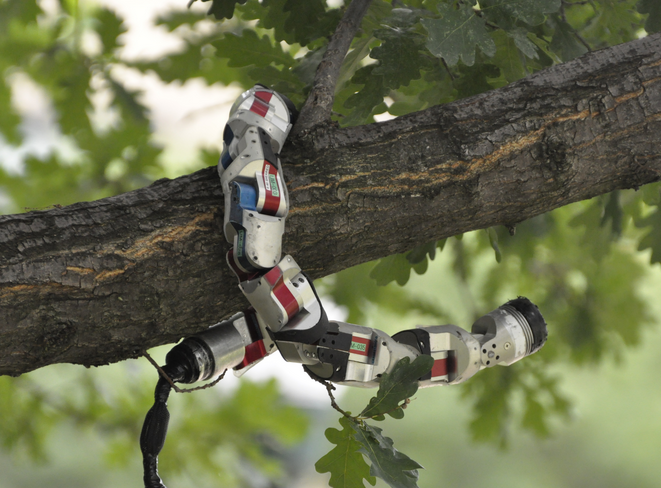Robotic Snakes Slither to the Rescue
While participants in the DARPA Robotics Challenge are hard at work designing a robot that can one day replace human first responders to disaster situations, roboticists at Carnegie Mellon University (CMU) are building an animal-like robot to meet a similar end. Once complete, their snake-inspired robots will swim and slither up pipes to find victims trapped in collapsed buildings, but their applications won’t end there.
 This week, researchers at CMU’s Biorobotics Lab released a video that showcased the snakes’ ability to wriggle through pipes to inspect radioactive areas within a nuclear power plant.
This week, researchers at CMU’s Biorobotics Lab released a video that showcased the snakes’ ability to wriggle through pipes to inspect radioactive areas within a nuclear power plant.
“Our robot can go places people can’t, particularly in areas of power plants that are radioactively contaminated,” CMU robotics professor Howie Choset said in the video’s description. “It can go up and around multiple bends—something you can’t do with a conventional borescope, a flexible tube that can only be pushed through a pipe like a wet noodle.”
To transmit key data back to power plant operators, the snakes, sporting names like Frostbite, Spooky and Pepperoni, have been saddled with lights and video cameras. This means that the snakes are also well-suited for search and rescue, since they can slither through cracks and over the uneven terrain of rubble to access the deepest reaches of a collapsed building or mine. Cameras allows rescuers to assess the victims’ condition visually before planning the rescue, while two-way speakers allow the two to communicate through the snake.
Originally, the snakes were designed to be lowered into a building by rope, or even carried in by a dog. But with of the help of some of the lab’s work this year, they can grab onto objects they meet in the air, meaning they can be thrown at an object and latch onto it.
But it’s not much of a leap to see where the lab got the idea for this highly maneuverable robot, the details of which were detailed in Choset and David Rollinson’s most recent paper. Thanks to the adaptability of the snakes’ real-life counterparts, the robots’ uses don’t end at rescue or nuclear power applications. Other work being done at CMU involves having the snakes apply layers of paint in hard-to-reach places, and even enter the human body to perform surgery.
Full story at GigaOM










